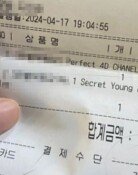Cultural Heritage Administration discovers Deokjong Eobo is not original
Cultural Heritage Administration discovers Deokjong Eobo is not original
Posted August. 19, 2017 07:13,
Updated August. 19, 2017 07:49

It has been confirmed belatedly that Deokjong Eobo, the royal seal of King Deokjong, returned from the U.S. Seattle Art Museum two years ago, is a counterfeit product. It has been reported that the Cultural Heritage Administration of Korea had identified an exterior discrepancy of the seal right after it was returned in 2015, accordingly conducted a component analysis in October last year and finally verified it was a counterfeit seal at the end of 2016.
The state agency is blamed of not publicly announcing the analysis results for eight months after its final verification. When the seal was brought back to Korea, the agency confirmed its authenticity, saying that it was fabricated in 1471 by King Seongjong in memory of his father King Deokjong.
“We have come to know that five royals seals, two of which were in honor of King Deokjong and King Yejong, were stolen in 1924 during the Japanese colonial period after reading the Dong-A Ilbo’s article published in 1924,” said Kim Yeon-soo, the director of the National Palace Museum of Korea, during the press conference on a new special exhibition titled “The Return of the Royal Seal,” “According to our component analysis, four royal seals, including Deokjong Eobo, had 70 or higher percent of copper content unlike other royal seals fabricated in the 15thcentury. All of the other royal seals fabricated in the 15th century of the Joseon Dynasty have at least 60 percent of gold content.
The theft of royal seals in 1924 was first reported by the Dong-A Ilbo on April 12 of the same year. Back then, the article brought the story of the 1924 robbery at the Jongmyo shrine storing tablets of Kings of the Joseon Dynasty.
The Cultural Heritage Administration says that it should not be treated as a fake product but a reproduction of the original as it must have probably been stored in the Jongmyo shrine by King Sunjong. However, some say the reproduction of royal seals under the Japanese Government General of Korea during the Japanese colonial era when the sovereignty was lost cannot be the equivalent to any fabricated reproduction of the Joseon Dynasty.
Sang-Un Kim sukim@donga.com







